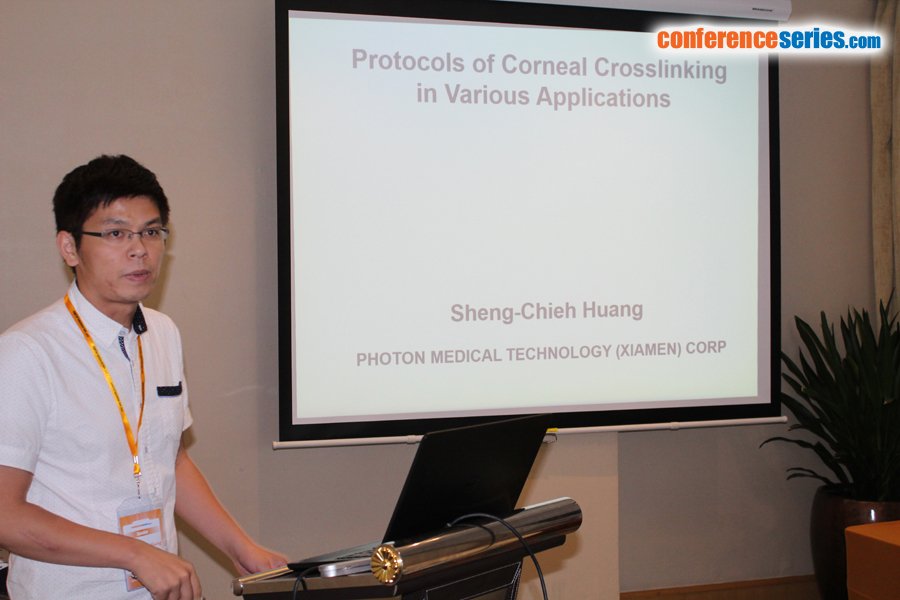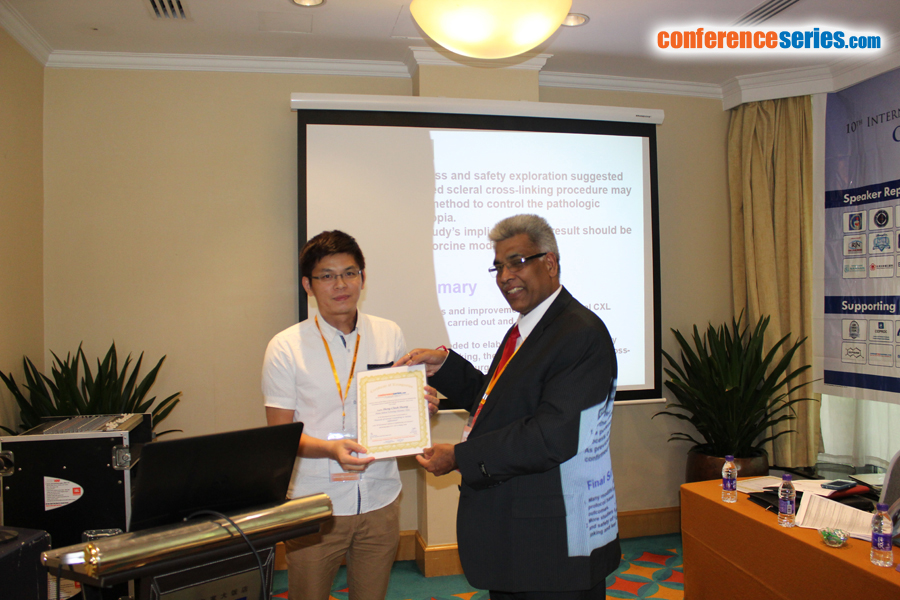Sheng-Chieh Huang
Photon Medical Technology Co., China
Title: Protocols of corneal crosslinking in various applications
Biography
Biography: Sheng-Chieh Huang
Abstract
We will present the CXL protocols in various applications including keratoconus, ectasia and CXL-combined with refractive surgery. Factors influencing the efficacy of CXL include UV light irradiation time, intensity and dose, Riboflavin (RF) instillation time preop and during CXL, RF compound formulations and concentration and available oxygen in the stroma. The most commonly used RF compounds include: TE, M, H and L types which have been used in various applications. Defining T1 and T2 as the preop and during CXL RF instillation time, the protocol based on a UV intensity 18 mW/cm2 are listed as: (1) TE type for epi-on: 0.1% RF solution (without Dextran) for epi-on procedure of corneal ectasia and keratitis. T1 is 10-15 minutes and T2 is 5 minutes. (2) M and H type for epi-off: 0.1% RF solution (with Dextran) for epi-off procedure of corneal ectasia and keratitis. T1 is 15-20 minutes and T2 is 5 minutes. (3) H type: Hypotonic Riboflavin solution for thinner corneal swelling, instillation for 10 minutes until thickness reaches safe range. (4) L type: 0.25% RF solution for use with refractory procedures. T1 is 1.5-4 minutes and T2 is 2 minutes. (5) 0.1% specialized Riboflavin in combination with iontophoresis device for epi-on procedure of corneal ectasia and keratitis. T1 is reduced to 5 minutes and T2 is 5 minutes. To improve the CXL efficacy, the conventional Dresden protocol is revised as follows: For the case of UV intensity 18 mW/cm2. For corneal ectasia and keratitis: Pause UV light-on for 2 minutes, then light-off for 1 minute (after 1 drop of RF), turn on the UV again for 1 minute, then instill 1 drop of RF with light-off for 1 minute, light-on for 2 minutes to complete the process.




